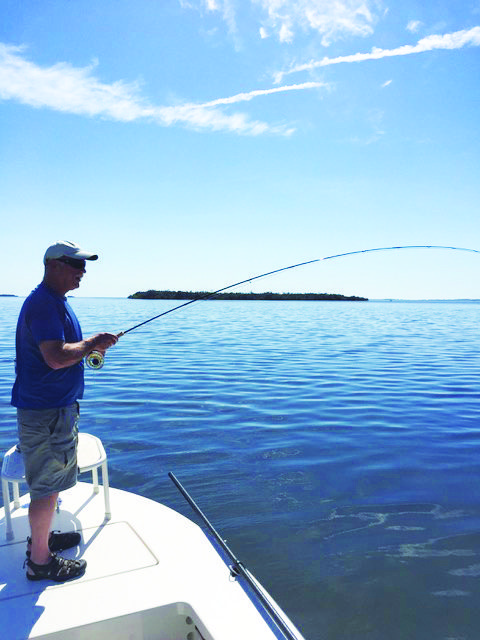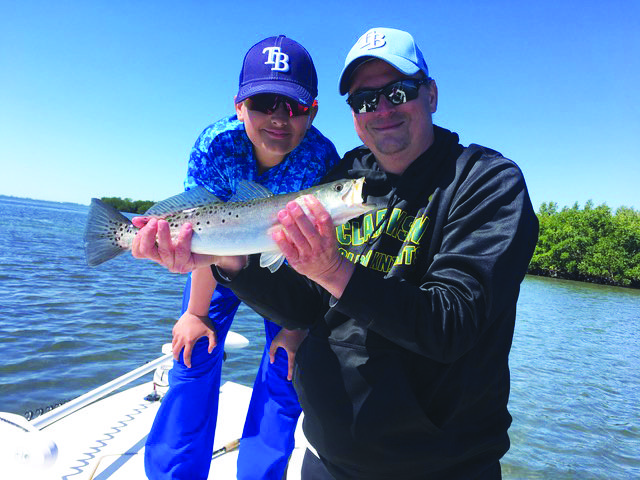By Capt. Mike Manis
Things are about to change and this month marks that beginning. We’re about to enter what could be considered a winter pattern on the flats, in and around the harbor. Intermittent northerly fronts combined with lower morning tides combine to bring this change. In addition to cooler temperatures that affect the fish, these winds push water out of the harbor escalating already low tides.
Of our game fish, snook are the most vulnerable to cold and should be well into their transition toward creeks, rivers, and canal systems. As a result, I tend not to target snook during this time of year. Out on the flats, I’ll typically turn my attention to redfish and spotted sea trout. Both these species tolerate the cold very well. Moreover, when the water temperature cools, the scaled sardines that make up a large extent of their diet move offshore. Like many prey or predator species, they are seeking more stable water temperatures. This forces the reds and trout to rely on shrimp and small crustaceans. As a result, I’ll begin using smaller patterns, flies, and will also slow down my presentation as the cooler water will slow the fish’s metabolism.

When fishing sand holes, keep in mind that fish like to hang on the outside edge. Sometimes just inside the grass and sometimes in the sand. This doesn’t leave them as vulnerable as lying out in the open. Also, many times, the smallest holes hold good fish. Try not to look past them thinking the bigger holes are best.
Every tidal flat in our watershed is affected by these same conditions. What’s more, keep in mind that it doesn’t have to consist of scattered sand holes mixed with turtle grass. For example, on the east side between Hobbs Point and Burnt Store, the fish will move out onto the outside bar and hang in the sand troughs. In Bull Bay, a very popular low water spot, ponds of all size form when the water drops out. It’s a mix of soft and hard sand and mud and if you find the right hole it can be good.
Until next month, good tides.
Contact Capt. Manis at www.puntagordaflycharters.com

